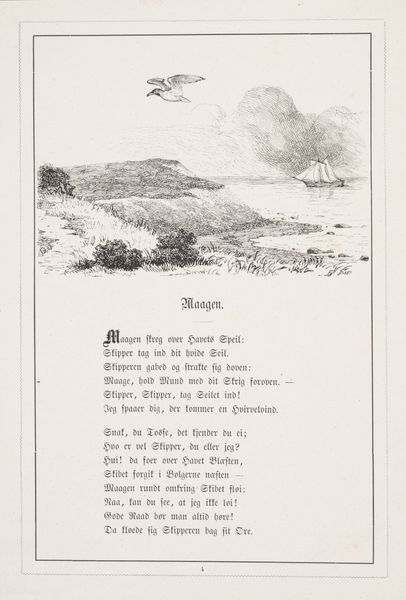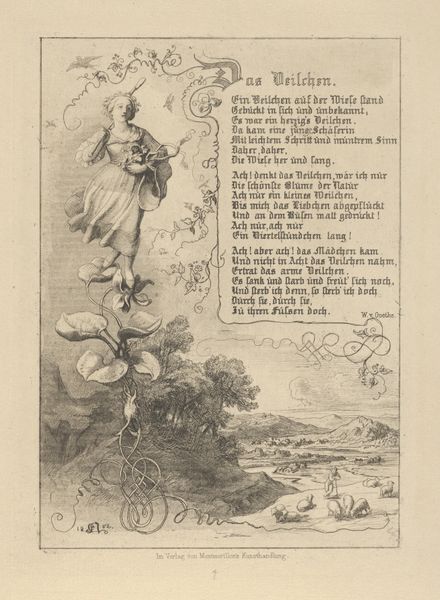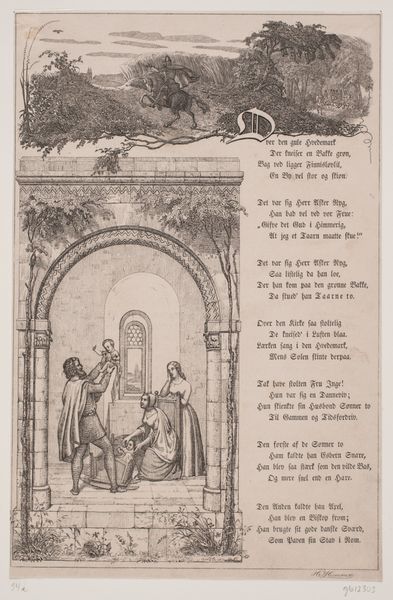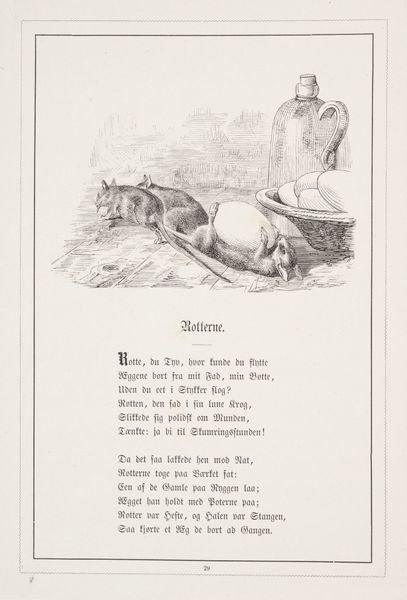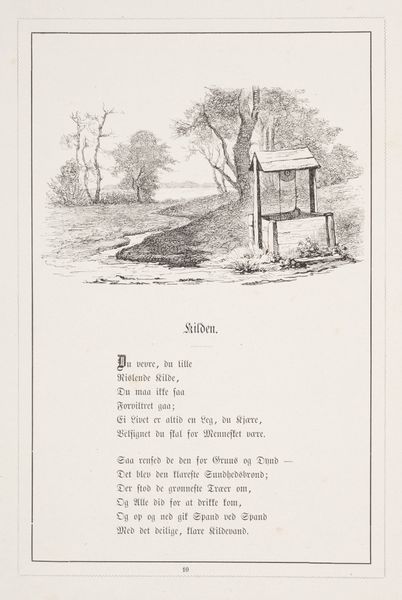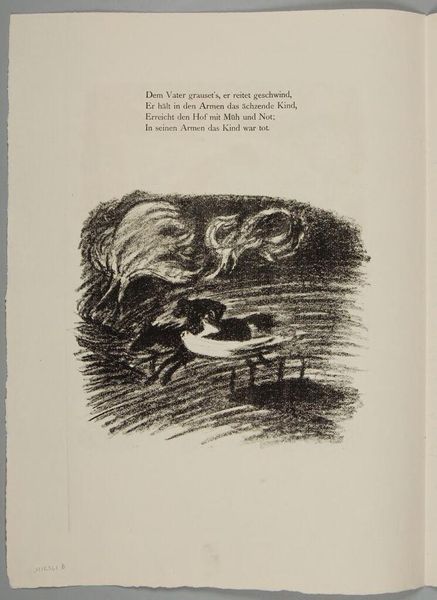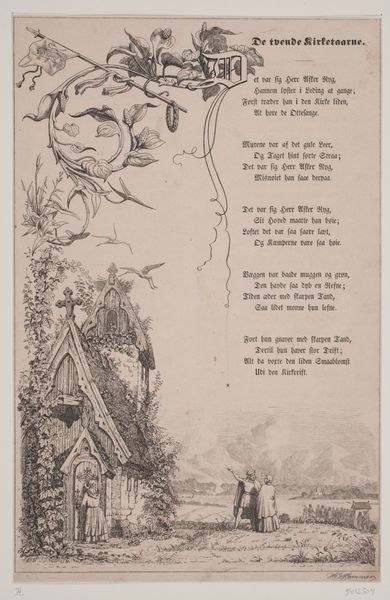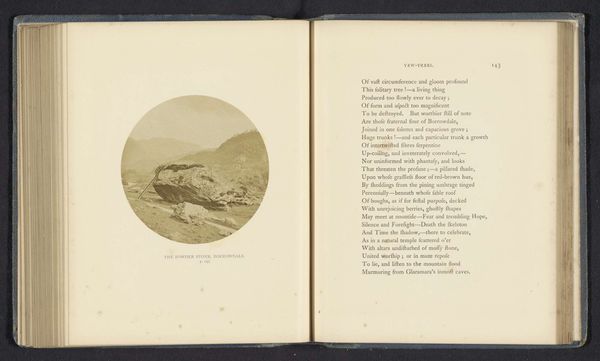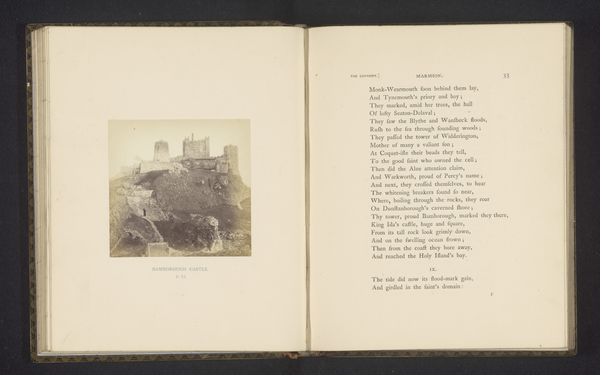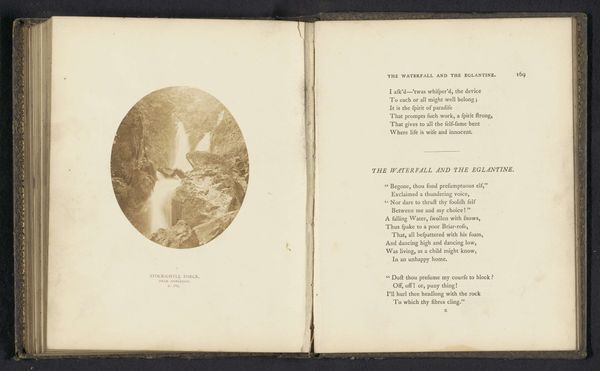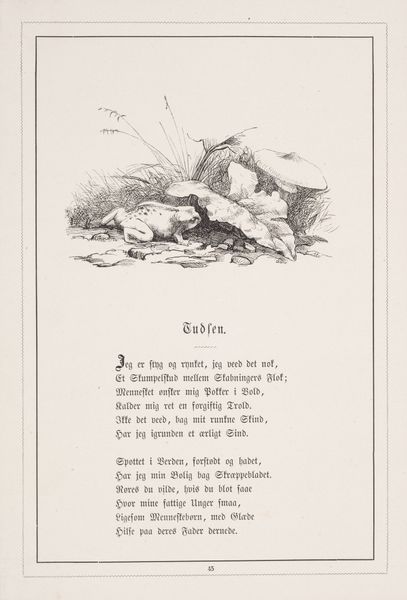
Dimensions: 10 7/8 x 7 5/16 x 3/4 in. (27.6 x 18.6 x 1.9 cm)
Copyright: Public Domain
Curator: Here we have an engraving from 1855 titled "Milton's L'Allegro and Il Penseroso." It's a print on paper, adapting Milton's poetry into a visual narrative. The romanticism is striking, isn’t it? How does this composition resonate with you? Editor: It feels…melancholy? The ruined tower, the lonely landscape. It certainly evokes a sense of solitude, almost like a stage setting for the poem itself. How do you interpret this work, especially considering its historical context? Curator: Exactly. Think about the Victorian era when this engraving was created. It's a period grappling with industrialization, and rapid social change. Romanticism, like we see here, often served as a critique of those shifts, idealizing nature and the individual. Consider the positioning of the text within the image itself; how might this merge of text and landscape affect our reading of Milton and of the Victorian period itself? Editor: It makes the poem feel even more…integrated into the environment, somehow? The landscape literally gives shape to the words. It is almost as if it transforms reading into a lived, embodied experience of immersion in a scene. Curator: Precisely. And how might we read this Romantic aesthetic in relation to the poem's inherent themes of loss, contemplation, and the search for meaning in a changing world? Remember that within Milton's text, “Il Penseroso,” translated as ‘the pensive man’ invites us to seek wisdom in silence and shadow. Can art truly be separated from politics and social statements? Editor: It really pushes you to consider the different levels of interaction – between the poem, the image, and the historical backdrop. That’s powerful! Curator: Indeed. This work encapsulates a longing for something lost. And its themes are still relevant in today's fast-paced world. Editor: I definitely see the connection now. The intersection of art, literature, and social commentary is a great synthesis!
Comments
No comments
Be the first to comment and join the conversation on the ultimate creative platform.
